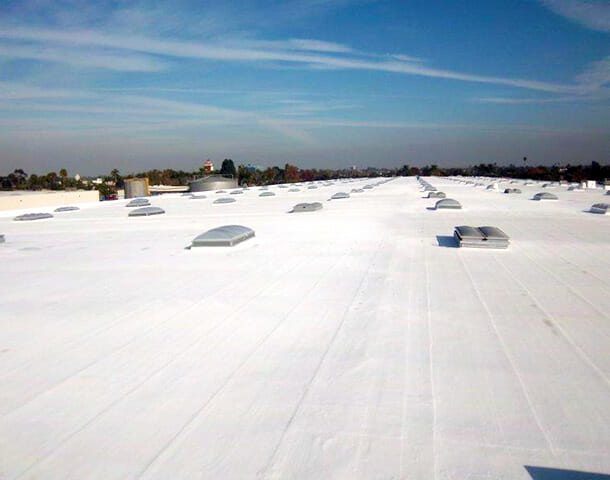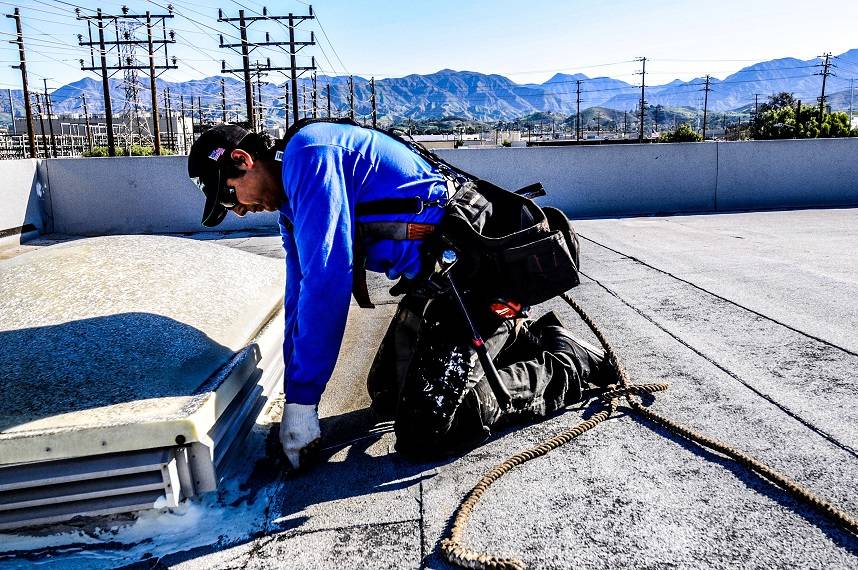Raising the roof is great when you’re talking about a party. When you’re talking about installing a real roof, though, no one wants to do that more often than necessary.
Some roofs last a mere ten years while others can last a lifetime. Luck plays a role but when it comes down to it, you can prolong your roof’s life with the right maintenance.
This is especially important when it comes to flat roof maintenance. There are plenty of advantages of flat roofs, but they do have their downsides. The most prominent one is losing the ability to drain itself.
To protect your investment in your building and make your roof last longer, follow these maintenance tips.
Who is Central Roofing Company?
Before we go into some tips, it’s important to know who we are and why you should trust us. Central Roofing, is a commercial roofing company that specializes in flat roofs. With over 30 years of experience dealing exclusively with flat commercial roofs, we have been around the block and have seen pretty much everything there is to see in commercial roofing. Now that’s out of the way let’s get into some tips!
Flat Roof Maintenance Tips You Need to Know
Most buildings have slanted roofs, and owners or property managers often don’t realize or consider how different a flat roof is until they’ve moved in. Worse yet, some don’t recognize it until they spring a leak. Here’s how to keep yourself from becoming one of them.
1. Maintain Breathing Room
One of the best ways to keep your flat roof strong and intact is to control its surroundings. As great as trees are for your property’s beauty and your air quality, they can wreak havoc on your roof if they’re placed wrong.
The rule of thumb is to have at least a yard between your roof and the nearest tree branch. If you have trees close to your building, trim them on a regular basis to keep them away from your roof.
The most obvious reason for this is the damage a branch can do if it falls onto your roof. However, close proximity also lets moss travel from a tree to your roof. That moss will damage your roof material and could lead to major problems.
2. Keep It Clean
As we mentioned above, flat roofs don’t have gravity on their side. Dirt, leaves, and other debris don’t fall off them the way they fall off slanted roofs.
Make it part of your regular cleaning routine to clean your roof every month or two.
Your first course of action should be reaching your roof with a ladder and using a leaf blower. This will get rid of as much debris as possible without putting extra weight or friction on the roof.
If you can’t get everything with a leaf blower, a push broom is the next best tool. You may need to do this more often during certain times of the year, like the fall if your roof tends to accumulate falling leaves.
As an added bonus, a clean roof will make your building look nicer and will keep decaying materials from damaging its finish.
3. Don’t Skip the Coating
As much as we all love the typical weather in California, we aren’t immune to extreme weather either. Depending on the material of your commercial roof, you may be able to use a cool roof coating.
There are coatings to protect your roof from weather issues like ocean salt, heavy rainfall, and humidity. This coating often lasts ten years so it will be well worth your investment. But it’s also important to mention that there are differences between the two most prominent cool roof coating applications, silicone coatings, and acrylic coatings. Both come with their own pros and cons so it’s important to know so you can figure out which one is best for your type of commercial roof.
4. Know How to Check for Leaks
One of the most common and problematic assumptions building owners have is that if their roof starts leaking, they’ll notice right away.
Sure, it’s hard to miss a giant puddle in your office. In some cases, though, roofs leak into attics or insulation and building owners or property managers have no idea. This can cause rot in your building’s structure as well as spread mold.
Instead, know how to find a roof leak. Pay special attention to areas where two parts of your roof join and to seams in the roof. Make it a point to go into your attic on occasion to check the roof, especially during or after rainfall.
5. Schedule Regular Check-Ups
If you forget everything else, this is the #1 most important flat roof maintenance tip: get regular inspections. And you don’t have to necessarily call a commercial roofing company every time you’d like your roof inspected. Your roof often gives plenty of clues that something isn’t right, but the average building owner doesn’t have the expertise to notice them. Here’s how to conduct a roof inspection yourself. You should also inspect after any major weather event to check for damage.
If you notice some things about your roof that seem out of place then hire a commercial roofing company to inspect your flat roof and let you know if there are indeed some issues that need to be addressed with your roof.
It may seem like an added expense, but these inspections can pay for themselves in no time. A problem could cost a few hundred dollars to fix in its early stages or it could cost thousands and thousands of dollars if it gets out of hand.
6. Prioritize Your Drainage
Sometimes, to protect your roof, you need to think beyond the roof. Your drainage system is a prime example.
A flat roof doesn’t have the benefit of gravity draining water off it as a slanted roof does. With a flat roof, you need a well-maintained drainage system to pull the water off and away from your foundation.
This is especially true in the winter. You never know when the temperatures will dip below freezing. Standing water on your roof can turn into ice which not only weighs down the roof but can also split the roof’s surface.
Maintaining your drainage system includes keeping your gutters clean so water can get through. It’s especially important during the fall and if you have a large number of trees around your building.
7. Stick With a Professional
You may have mastered the art of DIY decor, but your roof is a different story. If you notice serious ponding and continuous leaks then trying to do it yourself instead of hiring a professional can cost you far more in the long run.
This is particularly true for buildings with flat roofs. These roofs have plenty of considerations and quirks you won’t know about if your only experiences are with slanted roofs.
Keeping a Roof Over Your Head
There are a few parts of your building that are as crucial for preventing damage as your roof is. An insufficient roof could lead to mold and water damage, not to mention massive heating and cooling bills.
The flat roof maintenance tips above will help you keep your roof at its best for years to come. If you’re ready to take charge and make sure your roof is in tip-top shape or if you suspect a problem, contact Central Roofing to bring in the pros.

Andres is the Marketing Director at Central Roofing Company. He writes about commercial roofing, cool roofs, and everything else roofing related.


